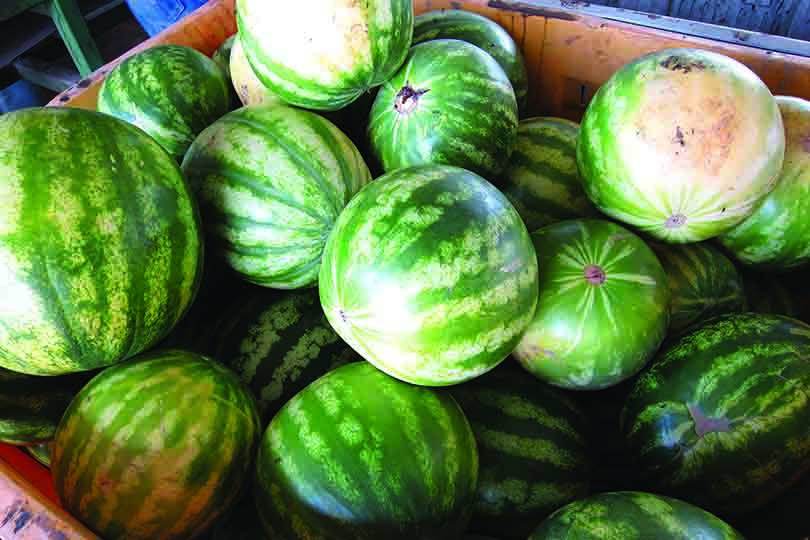According to most reports, the watermelon crop across the state is faring well.
Dr. Larry Stein, Texas A&M AgriLife Extension Service horticulturalist in Uvalde, says watermelons haven’t had as many disease issues as some of the other crops.
“Watermelons have been one of the better crops we have around the Lower Rio Grande Valley,” Stein said. “Other crops have had to deal with black rot and other disease issues, but watermelons have done well as the weather turned drier.”
Farmers, however, have had to deal with the weather, as well as gophers, crows, coyotes and squirrels.
One Northeast Texas grower, Melvin Rutherford of Hawkins, said the most significant problem that impacted his 14-acre irrigated watermelon patch has been weather.
Cool weather and cloudy, rainy days slowed melon growth in May, but the recent warm and dry weather in the region has shown signs the crop is recovering.
“You’re up against Mother Nature,” Hawkins said. “There are things you can do to minimize your losses, but in the end, it’s a gamble. Give me hot, sunny days, and we’ll be alright.”
Texas is the top producer of watermelons in the nation, according to the U.S. Department of Agriculture’s (USDA) National Agricultural Statistics Service (NASS).
According to AgriLife annual reports, the statewide watermelon crop in 2016 was worth more than $75 million—a 25 percent drop from $100 million in 2014.
Stein noted the Fourth of July holiday is the peak market window of opportunity for watermelons.
“Most of the state received good rains and no major issues this year,” Stein said. “If they can make the Fourth of July window, they should be fine.”
Stein noted watermelon sales start as summer opens and then typically tail off by the end of August.

